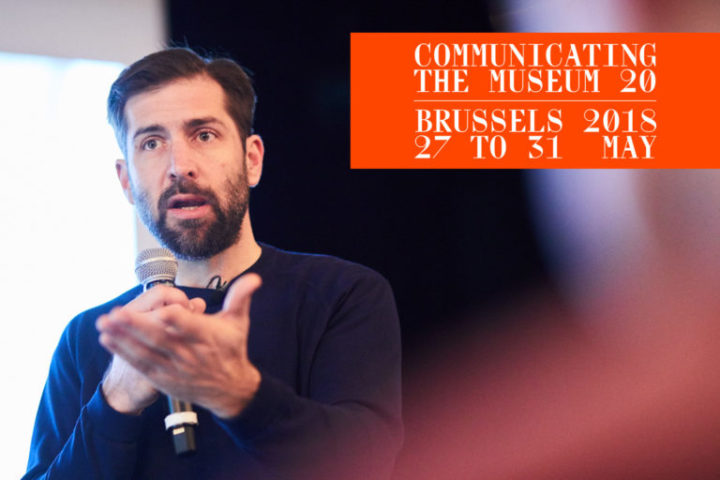The 20th edition of international arts communication conference, ‘Communicating the Museum’, organised by Paris-based cultural communications agency Agenda, will take place in Brussels from 27 to 31 May 2018. Over five days, museum professionals will gather to discuss the changing role of museums in society. Raphaël Cruyt, story boarder, pipeline welder, press cartoonist and Internet entrepreneur is one of the featured keynote speakers. In 2016, he and Alice van den Abeele opened MIMA, the Millennium Iconoclast Museum of Art in Molenbeek, Brussels. Raphaël took the time to answer a few of our questions leading up to the conference.
Do you think museums are engaging sufficiently with the topics of social justice and youth empowerment?
Museums often treat these topics with sincerity and passion through their programmes. The question is: what is the gap between words and action? Does society, through the museum, try to ease its conscience with a little paternalism and hypocrisy? And what are the politicians, who have allocated budgets to this programming, really doing about it?
Museums must broach these subjects with humility and with different approaches for different audiences. And of course, bearing in mind that our actions are modest and meaningless without collective mobilisation beyond the museum.
Can you tell us what led to the creation of MIMA and describe the concept briefly?
The revolution in communications, as described by social theorist Jeremy Rifkin, quickly brought about paradigm shifts in society at the turn of the millennium. In short, technology is changing the language of an increasingly transversal, emphatic and collaborative culture for the better. In a globalised world, the multiplicity of points of view have reduced common references, which change constantly with increasing access to and hunger for information.
So, one of the challenges for the contemporary art museum is how to reach out to an uninformed public. MIMA’s answer is the gamification of knowledge. The museum was developed in this vein, producing exhibitions based on the principle of video games: a low-level entrance and a high-level exit. In other words, the works and installations in situ have a language that appears – at first sight –direct and easily understandable for a large audience. The visitor then grasps the complexity of ideas while in the ‘game’. That is the initial idea, and we adapt it to the museum visit, together with the artists.
MIMA schedules two main exhibitions per year, with a predefined theme related to social issues such as collaborative work, building an identity, humour and freedom, as well as ecology and civil disobedience.
In 2018 we are tackling the issue of civil disobedience, with a first exhibition by two Swedish artists, Akay & Olabo, who share the ideas and way of life of Henry David Thoreau. The social theme is explored through participative and playful installation.
The second exhibition traces the history of protest posters from 1968 to 1973. Behind the beauty and humour of the posters is the story of the struggles and mobilisation of society, and a reminder that change is always possible.
What impact has this museum project had (if any) on policy makers in museums and the arts?
After only two years of existence, the MIMA is still viewed as a kind of utopia in the sense that it is a cultural institution supported directly by the public, with a bottom-up approach.
At this stage, it has raised the following questions amongst policy makers:
– Is the MIMA funding model viable? Could other museums exist in Belgium without depending on public subsidies?
– How does the museum succeed in attracting an audience? For instance, in disadvantaged areas like Molenbeek?
I do not have the answers to all of those questions myself.
How can museums in other countries and contexts reinforce their social role?
I believe a museum needs a strong identity that visitors can easily connect with. So, firstly, think glocal. In a globalised world, an identity is no longer defined by one’s surroundings, but rather, a point of view.
Secondly, I have learned, from my personal experience, that it is important to prove that your museum is independent, serving people, and not a relay of political or financial power.
